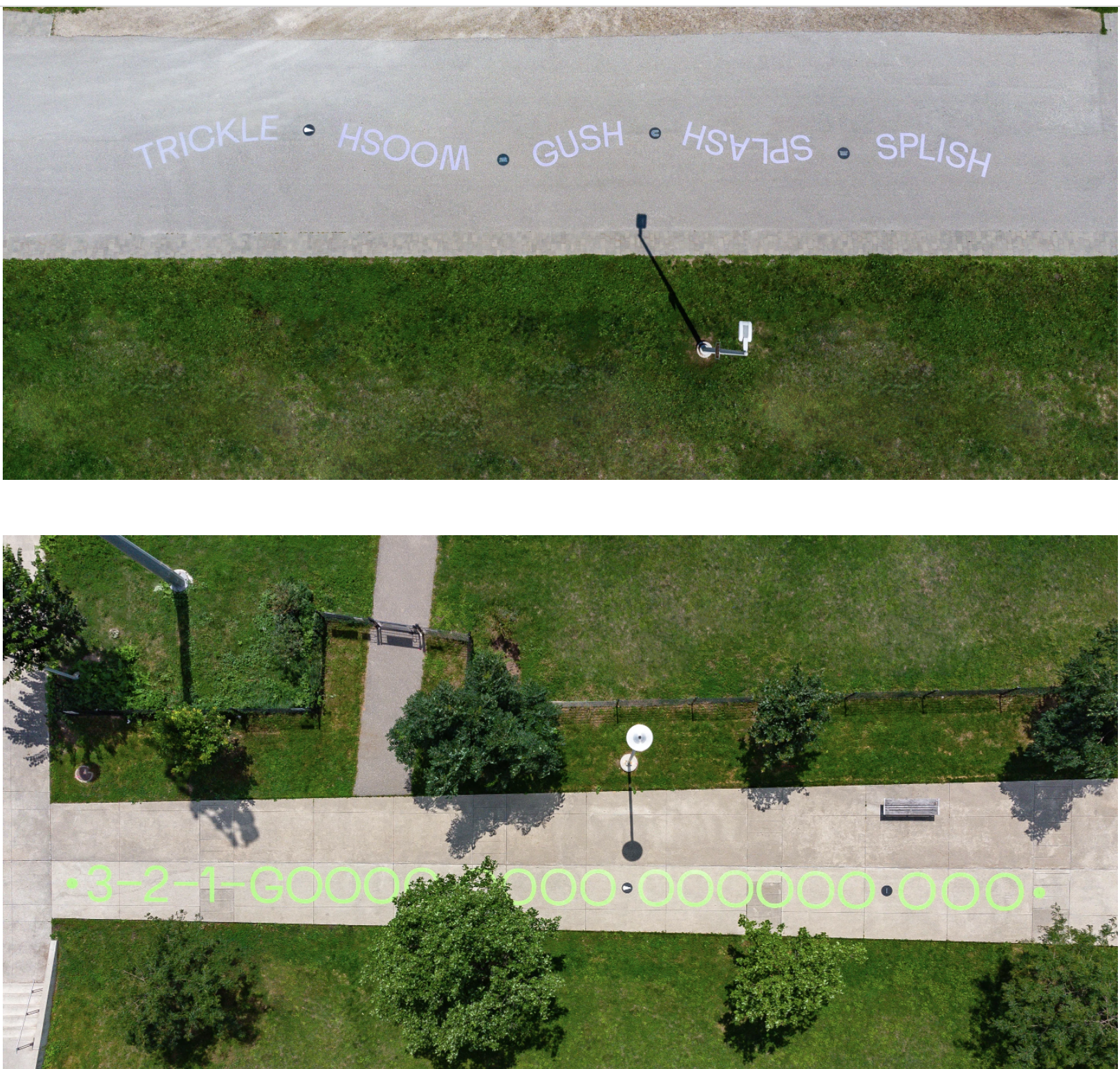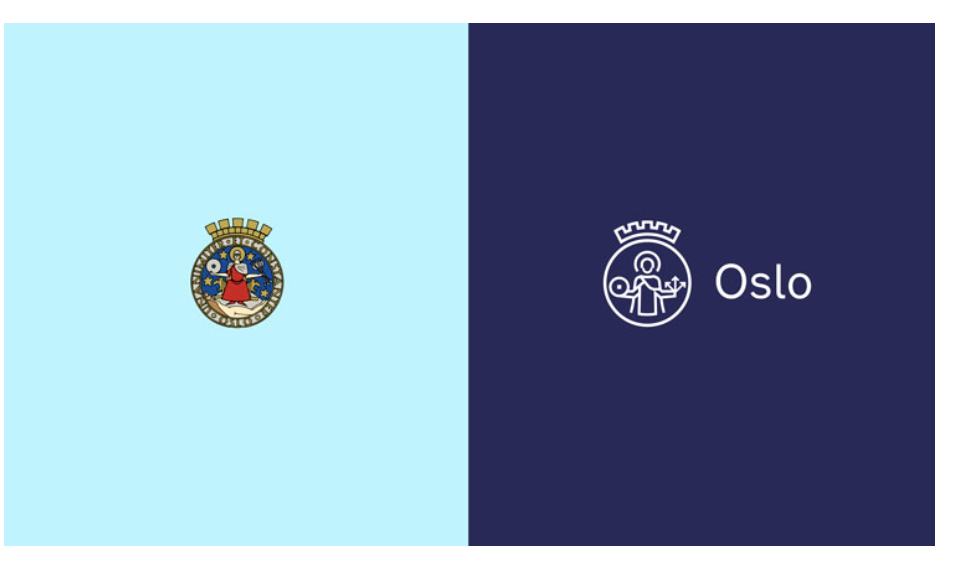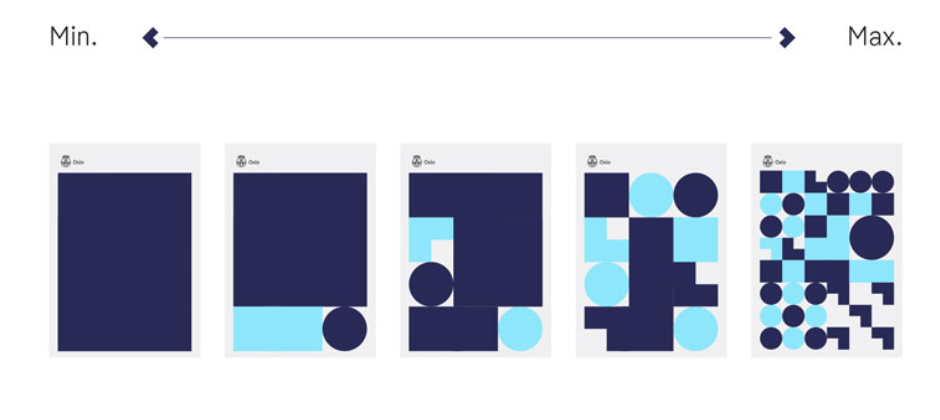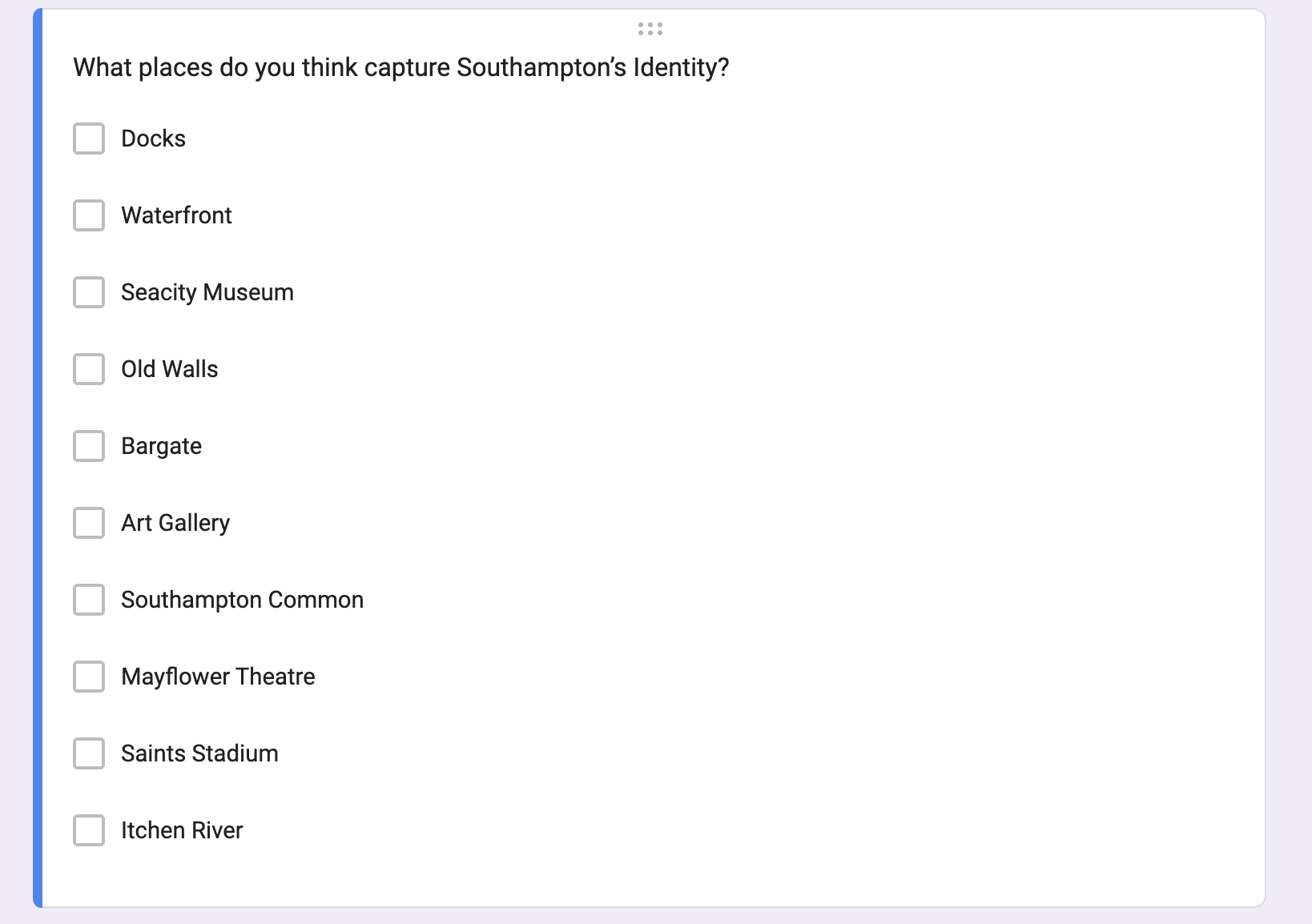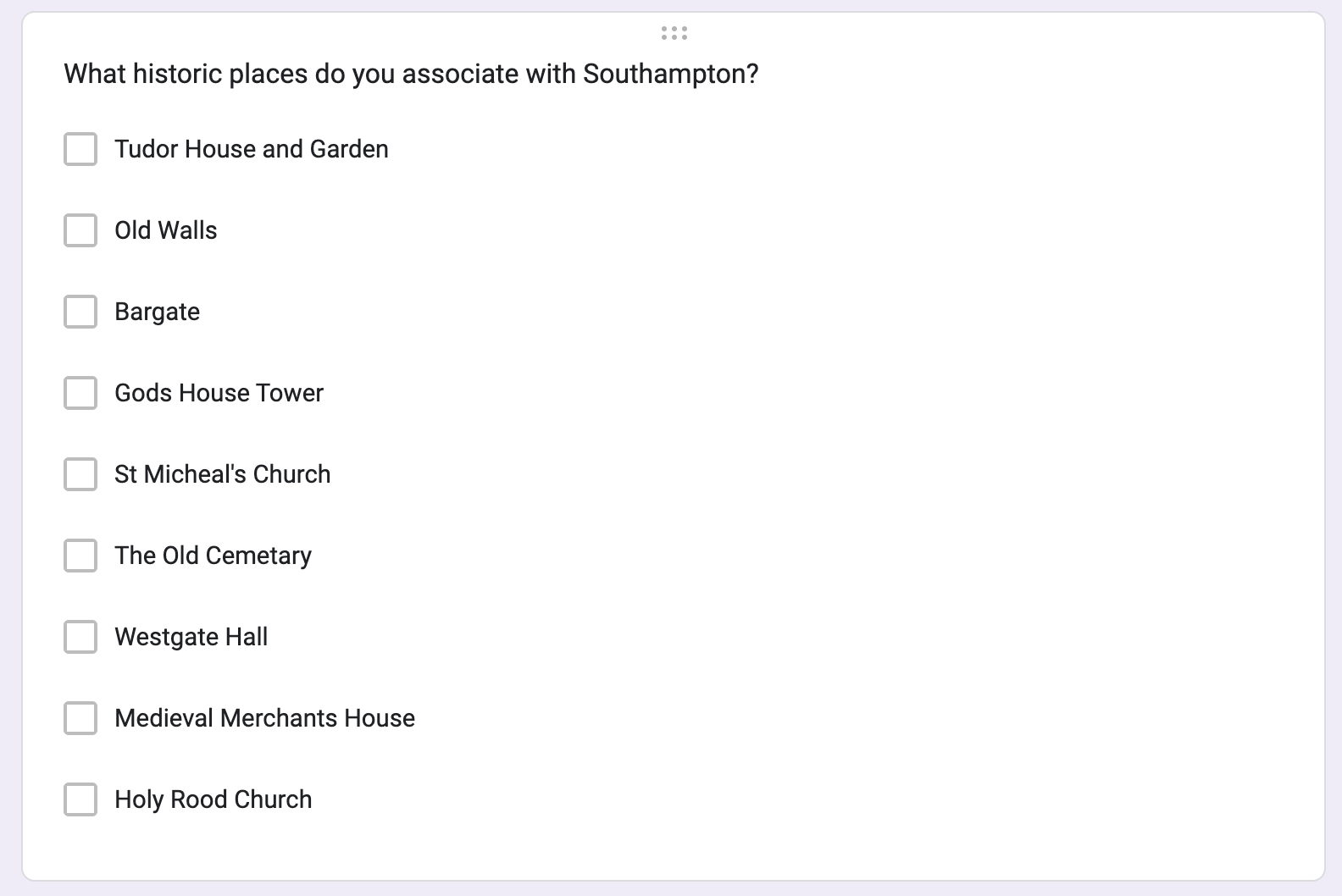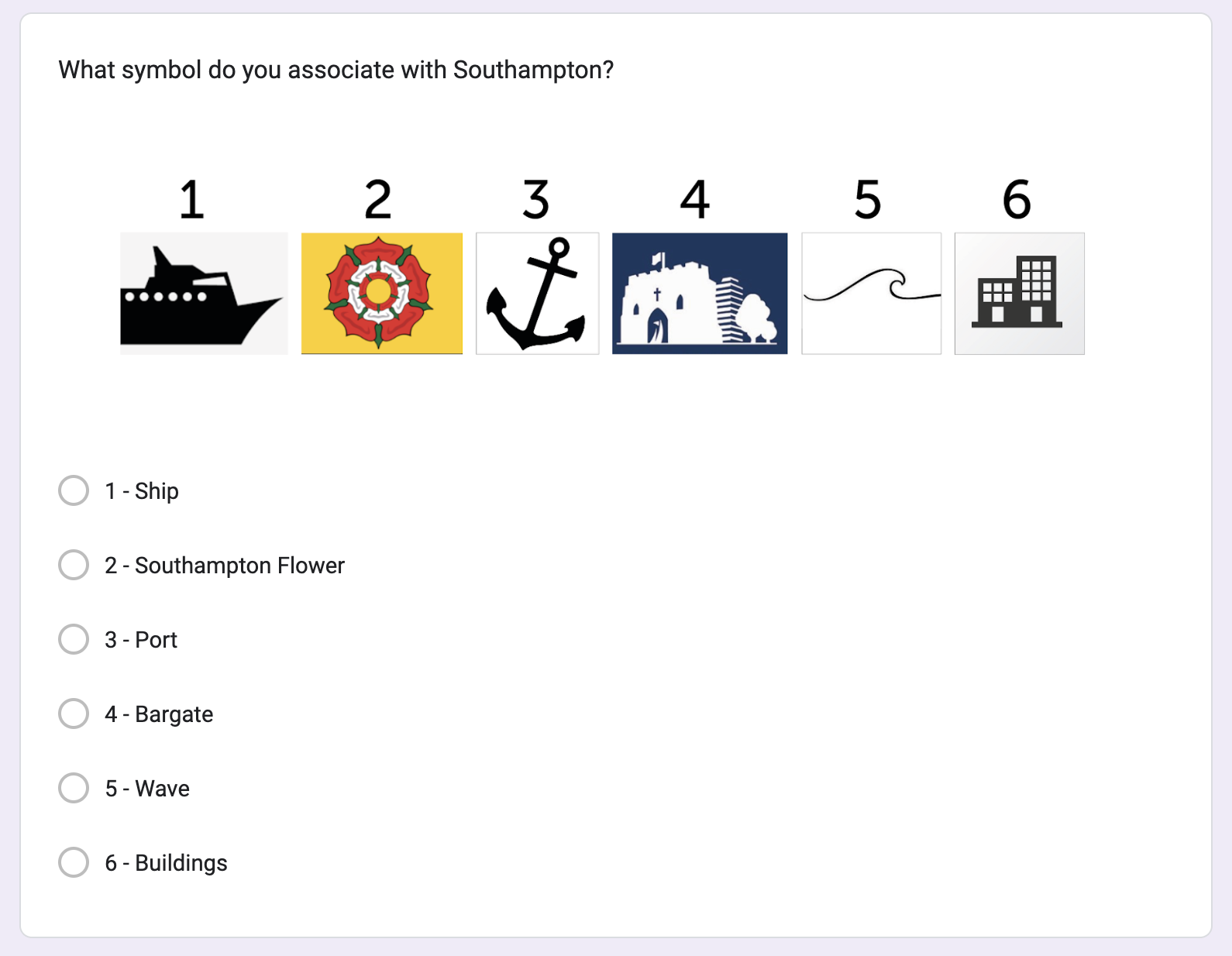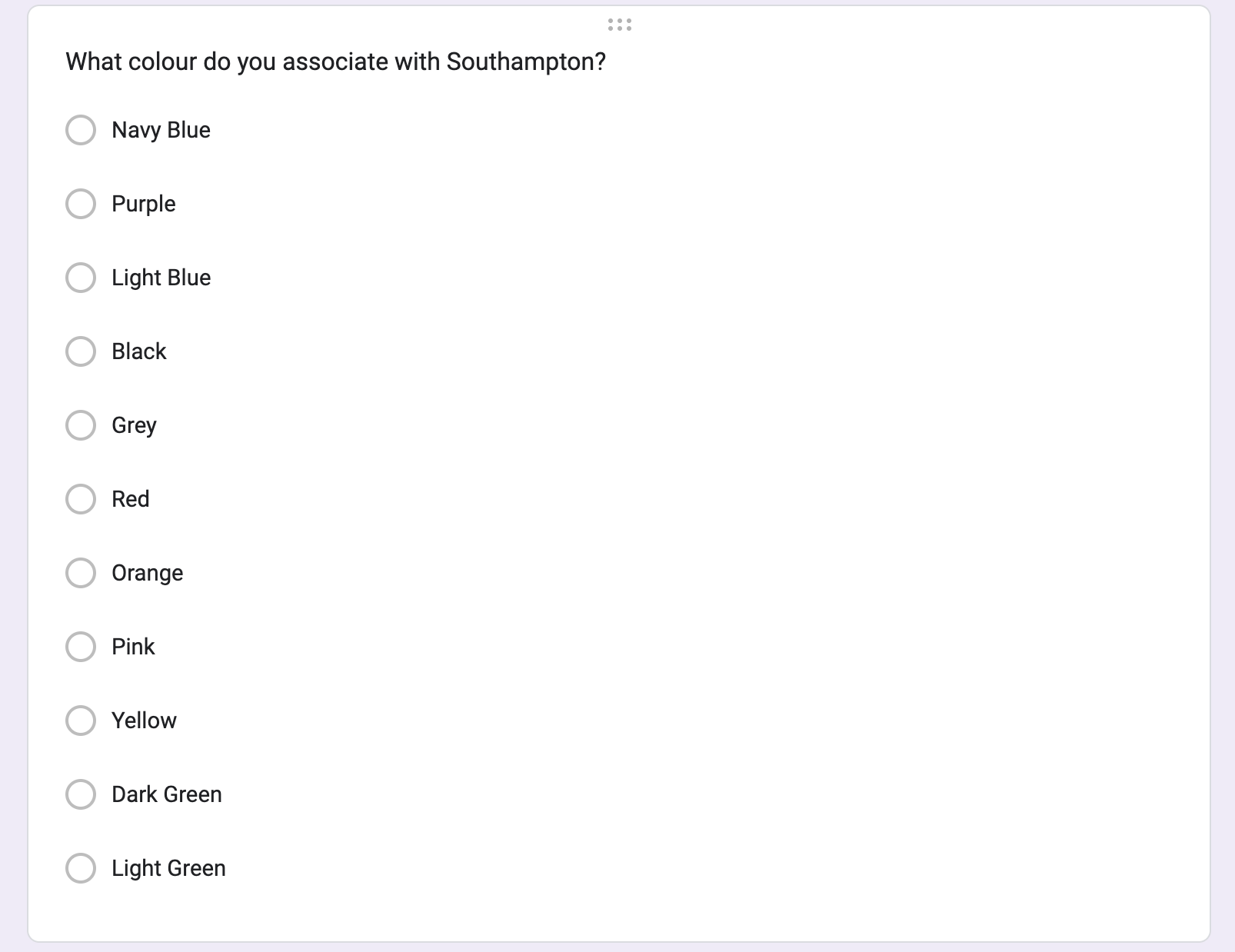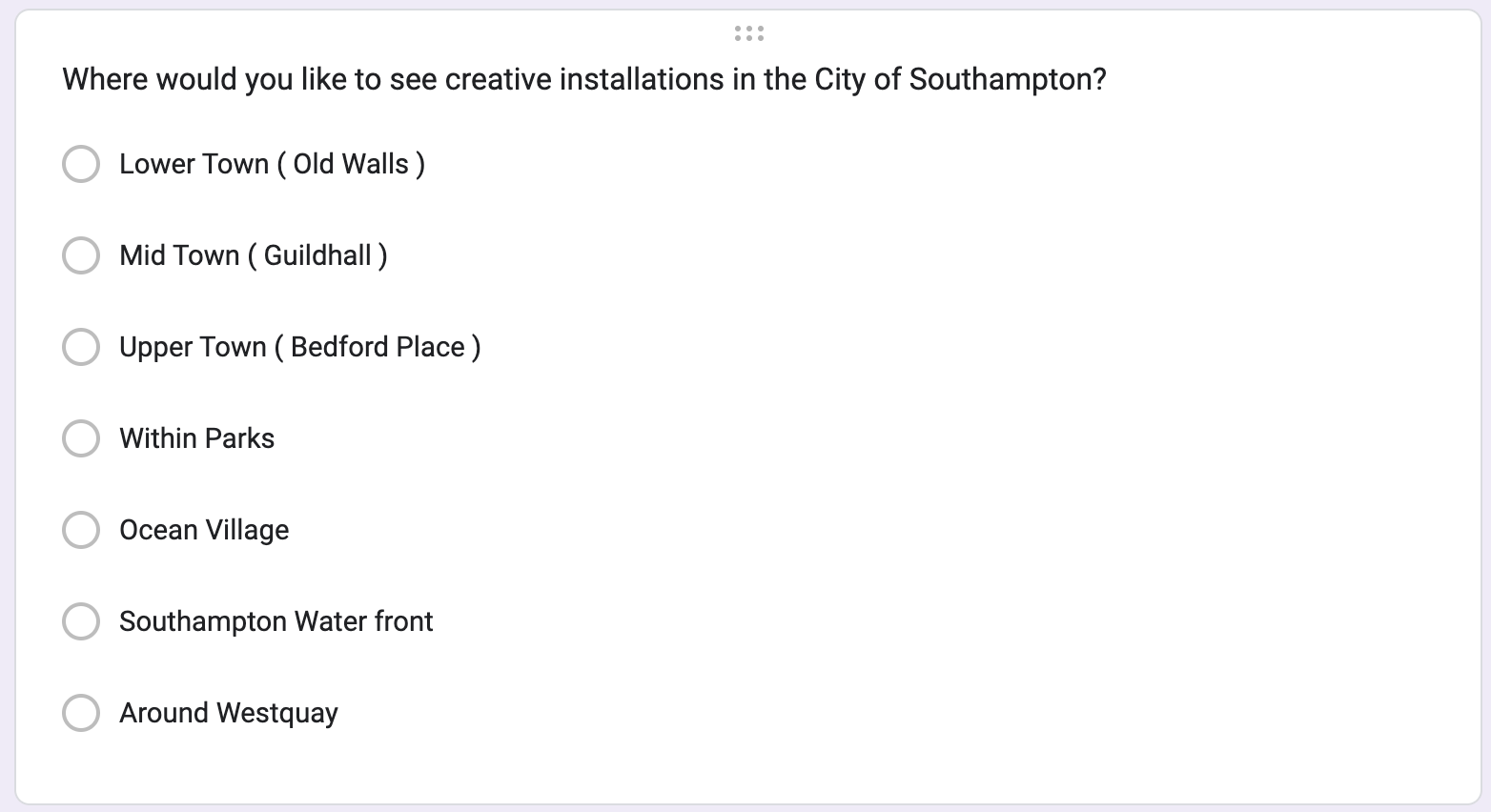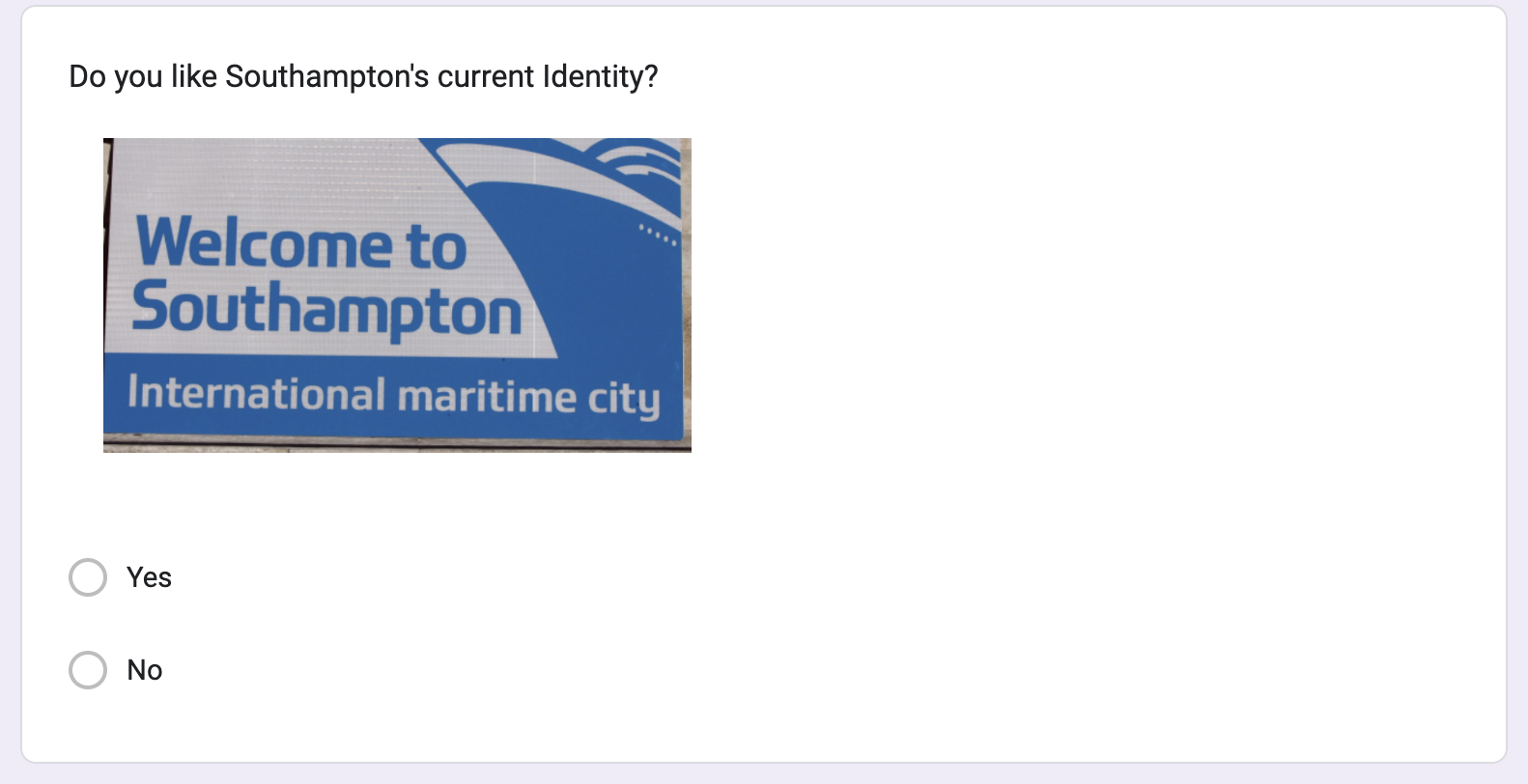May Break
My plan for the may break was to try and get all the interviews done of the people that responded to my emails as the emails seemed to be slowly coming in.
Interview with Joss
Joss is an artists with the A space artists, he is an illustrator that really finds himself responding to the environment around him and in particular, Southampton. Joss mentioned his own way of collaborating and meeting other artists in Southampton within the Interview. Lopez attends a sketching group that meet up in various locations across the city that allows him to be influenced by not only other people but the history that Southampton has to offer. This is called Urban Sketcher and they are across the world, meaning that no matter what location you are in as an artist, you meet and collaborate with people that have a similar interest in history as you do. At the end of each Urban Sketcher session, all the drawings are put together to discuss and see other peoples perspective on the same architectural structure. This is all recorded on Lopez’s Instagram and if the bid was successful, Lopez mentioned that he hopes this could be expanded into an exhibition which would allow for more engagement.
Joss also mentioned within the interview that he find it easy to collaborate with artists within A space as there is a network set up for just that which as explained by Mia in a previous interview. I love the way that joss was so inspired by the place and he mentioned being connected to the local environment.
This is a screenshot from Joss’s Instagram of a drawing he did of tudor house in Southampton, which is known to be a historical landmark. https://instagram.com/josslopez_art?igshid=NWRhNmQxMjQ=
The transcript of the interview can be found here:
https://otter.ai/u/c8F_8LmyF_JEESdHqyTWY0dPyps
Links and Ideas:
Joss is the first artist that really showed a passion to be in Southampton and to be creating and responding from other people and it was also clear to me that engagement was a real issue as this was the second time that it was mentioned, especially with the local community. Joss also mentioned that his favourite place within Southampton is the Coast and the Sea.
Drawing Case Study
Liz Rowland
Liz Rowland focusses on, “my work is exploring and celebrating culture and community, looking at different ways of living and documenting the beauty in the everyday."
Majority of her illustrations are a wide colour palette but also just trying to document the simple things from life, which can be seen of the illustration of street opposite. I love her approach to the illustrations but also that she’s not a perfectionist and only paints things in the image that she wants too. Seems like a massive collage.
Ideation Session with Ollie
I had an ideation session with Ollie who I work with, he is an illustrator and has previously done a graphic design degree so I thought it might be helpful to talk to him about my current ideas and how they could potentially form into something.
We initially talked about my project and I asked ollie what he thought about my concepts so far, he mentioned that I should consider a digital approach to the project instead of something that is physical.
Myself and Ollie discussed some of the ideas that had been generated from the Sustainable Collective, including how I wanted a sustainable approach but also how the tiles could potentially fit together in a dome. We spoke about the name and potentially also using the name Saturate; Southampton, I think this is actually a pretty funny name to call the project as I initially started the project by calling Southampton super grey and dull.
Below is a quote from the session of ollie talking about some ideas; “ if you introduce some sort of, like, incorporate some like VR into it, where like, people could like, look through like devices and some of that and then see, like, see designs rather than having to like, you know, permission and like, actually having to, like, physically place all the stuff there. But that can be incorporated later. But like, imagine somebody designed some sort of like pattern. And then you use some sort of like 3d mapping. So like, you get, like a basic sort of like idea of what the scale is, when you can, like use a very basic like, like cubic, like 3d model, like, wherever somebody thinks, they project that onto the 3d space. And then it can be seen through the like, through the lens of like, whatever, like the intractable but also I was thinking is that could go very hand in hand with this sea line that you actually mapped out, like, how, like, if you knew where the sea line was gonna raise as well, and then becomes like, the buildings that underwater through the VR sort of thing. And then you can see it when you're looking through the thing, the design kind of acts as like a water line on the buildings in like certain places. Also, then, if you've also got this idea as well about having the tiles maybe that x is like, the key point for like, there's more to see, like, you know, you see that it draws attention and then you're like, through these like people are like what is that like as they do with a lot of like, if there's a there's an artefact somewhere that doesn't look like it belongs there like a great piece of like intrigue to God like read about it, perhaps and you're applying next to it saying like, if you then download this thing or like you look through this, your optic device or whatever, like just like then you see these projections on the buildings I mean, and then you get to see the full artists work together really asking is like learning to create like a pattern responses. I feel like that's like, I don't know, I feel like that's a lot easier for like, and it still allows like fluid the pattern if you just strip like a pattern like yeah, that's a good one that's like accessible for a lot of different artists, regardless of what they are like you could then bring into like, a lot of like, his stuff is the illustrator you showed me his name he got a lot of his stuff his jokes and stuff is like, like, it's like life drawing isn't like that. But there's consistency is mediums like it's a lot of ink, it's a lot of like watercolour from what I just saw there. And then that could feed into his texture. So like you're summarising each of the creative voices and the texture and just then gives like I say that right? This is rather than saying people like give me a credit expense based on what you do, you funnel it in. So for me it would be something like I'd have to analyse my portfolio of illustrations while giving you something that is based on the sort of like paint exercise and maybe even have, like facial features that could be then like, then the way you get onto the plate, then using your explain to me again how the tiles come from me this thing in the ocean.”
We then discussed how I need to come up with an action plan that I could do for the design moving forward with the project, a 10 step process of the project.
The questions that were asked were the following;
Do artsits come to you for the process?
Social Media Channel Visualise it
Creative Response
How do I then use these responses?
How are they logistically placed within the city?
The transcript for the session can be seen here but there was a lot of background noise and we were talking over eachother half the time;
https://otter.ai/u/H6joztyAjU6__mN9ldMSKpX8Ezo
Links and Ideas following the session:
From this session with Ollie, It was great to talk to another designer who had a different perspective that allowed me to look at my project from a different perspective. From this I think there are a couple of questions I needed to think about - Are the artists responding to the landmarks? How would this work? Is it a process or an output? Do I want it to be sustainable? How will this relate to the identity of the city? I also wanted to try and research a digital approach to the project to add a different perspective.
Case Studies
Open Collab
Thinking of digital projects, It reminded me of open collab which I researched in a previous module. For a refresher, when you upload your work, your work is randomly combined with other works on the site. Open collab have themes and different briefs which allow for collaboration to happen all over the world. I feel this case study really relates the basics of what I am trying to do with my project. Patrick Thomas said the following; “Obviously one of the big – if not the biggest – lesson we have learned during the pandemic is that we are stronger together and that by working together, and helping each other, we will overcome this and any adversity. Therefore any kind of collaborative project would appear to make sense right now. The experimental nature of Open Collab encourages dialogue and requires a certain amount of adaptability which I feel can only be a good thing.” https://www.itsnicethat.com/articles/patrick-thomas-jonathan-auch-open-collab-graphic-design-digital-design-indaba-280520
Hato / D&AD
https://www.itsnicethat.com/news/hato-d-and-ad-2018-visual-identity-start-with-a-mark-digital-240118 Another digital project that looks at collaboration online, is the D&AD identity that was created by Hato. The following is a refresher of the case study, “The collaborative visual identity is available on D&AD’s website inviting users to do anything from “a quick sketch, a handful of keywords or a mid-thought doodle,” says Hato. “The easy-to-use interface guides visitors through the process of creating dots, lines, and even words in 3D, catering for copywriters-come-concrete poets as well as the more visually minded.” Users also have options of brush size, type input and rotation so that you can draw three dimensionally and can also draw into everyday life using AR mode. Start with a mark “is built using Three.js, Firebase and Cloud Function,” explains Hato, creating a tool which “translates the trend of 3D or spatial drawing — currently very popular in VR and AR engines — to a web-based platform.” It is additionally available on both desktop and mobile browser, allowing “wider access to 3D digital drawing technologies”.
Another really interesting way to create a digital collaboration that is simple and easy to use which i think is the jist if I am going to be working in a digital format.
Interview with Gareth
I was still struggling to talk to someone that was directly involved with the City of Culture and information that connected to the Southampton Bid. After speaking to Lizzie on the course in our weekly peer to peer session, she mentioned that her boss might be able to link me to some people within Southampton that would be able to talk with me about the city of culture.
Within the interview, Gareth was only able to give me names about the main people to contact within the City of Culture. The following people that I contacted were:
Zoe
Claire Whittaker
Gemma Nicoles
Karoline Able
After this session with Gareth, I also decided to post on my Linkedin page to see if anyone could contact me. Gareth also shared the post for me which is when a couple of people got in contact including someone called Hayden Collins - previous to this I did research on everyone listed on the committee for Southampton City of Culture and he was apart of the Community Team.
** I’d also like to note i did email everyone on the Comittee that was listed on the Southampton 2025 Website but none of the interviews went ahead due to no email response.
You can see the transcript of the meeting here:
https://otter.ai/u/C-1mP_X3UQLaM1yoA_j8nvU7Rmg
Interview with Mary
Mary was one of the people that was recommended that I speak to from Mia in the initial interview. ** Unfortuently Mary recorded the interview after giving her consent but never sent me the Interview so I only have the notes I wrote down as reference.
Mary works as a support mentor for Artists within A space, she also runs workshops for artists across the city. We had a super interesting conversation, which mainly spoke about the work that she did for the city. She also mentioned that I should contact celeste who run a critical exchange for artists in the city and as well as this she explained some of the programmes that are within Southampton to help and support artists.
Links and Ideas
My next steps from this interview were to email Celeste and to do research on the Lucky Dip Case study she mentioned:
Lucky Dip
“The Lucky Dip Bursary scheme offers ten artists in the SO postcode £500 to fund the creation of a new artwork or activity.
The application process will be light-touch and proposals will not be assessed. The bursaries will be awarded to artists through a lottery selection. This experimental new approach was originally proposed by Southampton based artists Dave Hubble and sarah filmer and adapted by ‘a space’ arts in response to a recent review of how our Arts Council England National Portfolio Organisation (NPO) funding supports artists and to proactively remove barriers around inclusion, application and selection processes.
We understand that the past few years have been very challenging for artists across the country. Loss of income from postponed or canceled projects and shortages of other employment opportunities in the wake of the pandemic have made it difficult for artists to fund their practice. The Lucky Dip Bursary Scheme will provide financial support and positivity at this difficult time by enabling ten local artists to make new work”
https://aspacearts.org.uk/artist-development/lucky-dip-bursaries
Interview with Katie
I managed to get an Interview with Katie, who actually won one of the grants within the young people art award that Southampton ran in the lead up to city of culture. I wanted to understand what has her journey been and how she has viewed the City of Culture. The following link takes you to the grant winners: https://southampton2025.co.uk/this-is-our-southampton/our-time/
Within the Interview, Katie explained that she went to university in Southampton and decided to apply for the grant on a wim but since has been able to attend alot of different events with the city that has allowed her to network. She says the following about collaboration within the city, “it was a really amazing way to meet a bunch of young other artists at once, but I've still met plenty of other artists in that area even without it even just through doing uni here. And having like someone who mentors me in sculpting as well, like, it's just always sort of been ever since I lived here just being surrounded by other artists and other creatives.”
I also asked her, like i asked everyone else what she would like to see in the City, if Southampton won the bid; “Just in the fact that it's already brought in, like bursaries for young people, that sort of thing, continuing and being able to really dedicate the time and the money to getting more people funded, and more projects, like, given sort of centre stage. And like, I mean, I feel like that shift has already started, like, I think it used to be that I would tell people, I'm an artist, and Southampton, it'd be sort of like, okay, that's a bit different. But now, I think it's even just through the bid process, it's become a lot more like, oh, yeah, I've heard about, there's more of an art scene there now. And just having that recognition continue. And building upon that, I think it's going to just really help other people like me, because I was encouraged people to stay here post uni. Because it's also cheaper deliver than it isn't London and trying to be a young, creative, and trying to sort of earn a living off of what you do. It's so much more beneficial to still be in a city but be in a city that costs a lot less.”
This is a screenshot from Katie’s Instagram:
https://www.instagram.com/p/CBd784ojhl3/?igshid=NWRhNmQxMjQ=
I agree with Katie that I feel Southampton needs a better recognition for everything that it’s doing. It was nice to hear a completely different perspective to the City of Culture bids of someone that was actually involved in Winning a grant. I feel this interview with Katie was a-lot more positive around the university but also Southampton as a City which was helpful to see the argument of my project coming together.
You can read the transcript of the Interview here:
https://otter.ai/u/JXuU4PG-VBPxy1UTuazx2SMK0EQ
Reflection on Interviews so far;
The Interviews so far have been great to get an understanding of how different organisation’s work and then compare that to the freelancers like Katie. I also wanted to see how different artists and designers collaborated and it is clear that collaboration seems easy when you are apart of an organisation or you have come out of university with a lot of connections. I still would like to push to interview some more people, but i feel if i didn’t interview anyone else for the rest of the project, I feel I have enough information so far to be able to show the downfalls within the city but also why collaboration is so important. I will continue to learn about Southampton over the upcoming weeks.
Developing a pitch:
After feedback from dan, he suggested that I looked at my project like I was pitching it to someone or a business, so i could see if I had everything and wasn’t missing any gaps:
My Research Question?
How can collaborative design help to produce points of creative interest for the community as well as a cultural identity for the city?
An Overview of the issue?
My home city, Southampton, has been apart of the application process to be the city of culture for 2025. Apart of the bid is showing of the city of culture within the city as well as bringing creativity and culture to the forefront if they were to win the bid. The issues are currently that there is lack of collaboration across organisations and visual creativity and culture seen within the city. There is also lack of community engagement in culture events and spaces. There is also a lack of an sense of place for the city as it evolves into this new form of a city.
How am i going to solve it?
Visually showing the creativity of artists and designers who are living and working in the city of Southampton by creating a collaborative process that will allow the artists to respond to a brief set, allowing them to showcase their work. This will also be a form of networking for the creative community as well as the first project that will be set as a city for the city of culture post bid win. On the back of this, a new identity for the city will be created to recognise the new form.
Who is my audience?
My audience is the creative community but also Southampton as a whole as I feel there are two parts to this outcome.
Key Case Studies
As of yet, I feel there haven’t been any crazy different case studies that really relate to my project but I feel this will be next steps for the week.
Key Insights
Southampton was selective of who they included within the City of Culture Bid
The city of culture and how it works and benefits different cities
How Southampton have approached city of culture
lack of engagement
lack of collaboration across organisations
lack of collaboration
lack of knowledge of who is a creative in the city
lack of any visual identity
This was writing it out in the simplest form possible so that it is easy to understand and build upon how I will do different things.
Case studies:
I felt that I didn’t have enough case studies that supported my project yet and wanted some more inspiration before I started thinking about collating my ideas into ideation later in the break:
The key words when researching for my project are - Collaboration Community Identity Place Identity Culture Creative
Visual Identity for Playing in Public which was created by Cossette. Within the article, It is describes as the following, “The pandemic highlighted the strong relationship between play, physical and mental wellbeing, and public space,” says Cossette’s design team. Therefore, the need for outdoor public space in dense, high-rise communities, like the ones near The Bentway became more desirable.”
“Cossette had the challenge of creating a wayfinding system and visual identity for the exhibition which not only encouraged locals to “see their city through the eyes of play” but also reinforce social distancing. “The vibrant three-zone colour palette contrasts with outdoor surroundings to make it easier for visitors to move safely along the play path,” says the design team.”
This made me think about my project and whether I wanted a cultural identity of a visual identity. I love the colours that they used and how they really pulled through with the words and placement. I think this could also work for photography in an exhibition space.
Oslo’s Identity
I found a case study of how Oslo rebranded themselves as a city. Amongst the rebrand they have been given a new visual identity, new logo, font and design system. They wanted to create an identity that everyone was proud of and that represented the city. It’s been simplified an modernised compared to the old logo. “The city was an inspiration for much of the redesign. A new colour palette has been picked to reflect Oslo’s cityscape; blue from its trams and the fjord, green from its parks and protected forests, and warm and neutral tones inspired by its buildings’ facades.
The new design system comprises three basic shapes which were inspired by architectural details such as gates, tiles and decorations found at many of the city’s landmarks like Oslo’s City Hall, the Vigeland Sculpture Park or its industrial Barcode district. Collectively, the shapes come together to form the word “Oslo”.”
This case study is a prime example of what I feel Southampton needs as a city, to be able to modernise and create a consistent identity that corresponds to the cultural changes as a city.
Old Trafford
A case study I have looked at in a previous module, but I thought it related to what I wanted to achieve within my project too. https://www.creativeboom.com/inspiration/old-trafford-art-trail/
The old Trafford art trail calls on the city of Manchester to help create and design 6 murals on walls and buildings around old trafford. The whole theme of the project is community and togetherness. ““Old Trafford has got a really great and diverse community, so the first part of the project is all about giving people in Old Trafford an opportunity to get involved in something creative during the lockdown," Robert (the designer) tells Creative Boom.”
There are black and white drawings included within the pack which enable the residents to draw their own artwork in the mural location. Robert is also organising the Seymour Park mural where he’s planning on inviting a range of designers, illustrators and artists from the area to submit a letter design to make up the mural artwork.
Wayne Hemingway:
https://www.designweek.co.uk/issues/23-29-april-2018/wayne-hemingway-power-designing-communities/
Although not directly a project, an article I have looked at before was this one on Design week which quotes Hemmingway saying the following; “The power of designing with and for communities”. He co designed the new Dreamland at margate which looked at how important it was to engage the community and the design. “Working with communities means you design with them, not at them, in order for projects to truly succeed. In order to understand the place and its people you can go out to meet them, learn about local politics and genuinely get involved. This process can add time, extra processes and requires you to get out from behind your desk but for us at HemDes it brings fun, interconnection and innovation to our projects and importantly keeps them grounded.”
A project I haven’t heard about before though was called Blackburn is Open, which was apart of a regeneration project in Blackburn. It allowed small creative businesses to have discounted rent in vacant shop spaces. This article just outlines the importance of working with a community for the communities needs at the heart of the problem.
Ideation Collating:
Now that I have confirmed the pitch and have a solid groundwork for the project as well as some interesting case studies to back up my ideas, I need to start on the design as I feel that I am behind with this, I also feel that I am really stuck with this tile Idea from previous ideation sessions, so there are somethings I need to figure out with the design - which can be seen in the mind-maps below:
What am I creating?
Whats my final output?
From the above mind-map and writing out all the options of what my output could be, i decided that I wanted to create a process that could be put in place to create an installation, which would include publication work and signage. I feel I would also want to create a brand identity.
How will I get to my final output?
Now i have decided what I want the output to be, I feel the final output will come have input from the questionnaire results as well as asking for the opinion of those who I am interviewing. There could also be the potential to still run a workshop to gauge what other people think.
Why am I creating it?
I am creating an installation due to the research I have done I feel this would be the best approach for getting artists and designers involved in something thats more permanent for the city than something thats just going to last a year. The process that I am going to create could also be used in other creative / cultural projects across the city in the future. The branding will be the start point of showing that Southampton is cohesive as a city and can be seen as a visually creative city.
Developing a questionnaire
From my interview with Mia and James as well as the Hemmingway Article, it was clear I needed to create a questionnaire that would allow me to ask questions to the wider community about the new identity as this would also involve them. Below is a mind-map of questions that I wanted to ask:
This became the following:
What places do you think capture Southampton’s Identity?
What colour do you associate with Southampton?
What symbol do you associate with Southampton?
What historic places do you associate with Southampton?
Do you think culture is celebrated in Southampton?
are you aware of planned cultural changes for the city?
Have you visually seen any creative installations across the city?
What cultural improvement do you think could be made to the city?
Where would you like to see creative installations in the city?
Is there anything you would like to add about Cultural Identity?
I then took the time to write this up on google forms:
The link for the questionnaire is the following:
https://forms.gle/BCSA3aPxT1JUvPdr8
I decided in order to connect with people, I sent it to the people I knew in Southampton but also the best way of getting in contact with people these days is through facebook. I joined a local facebook group where I knew there would be a range of different age types and backgrounds and experiences.
I also posted on my personal instagram and facebook pages as I feel this would gather the post amount of data.
I will leave until week 13 to analyse the results.










